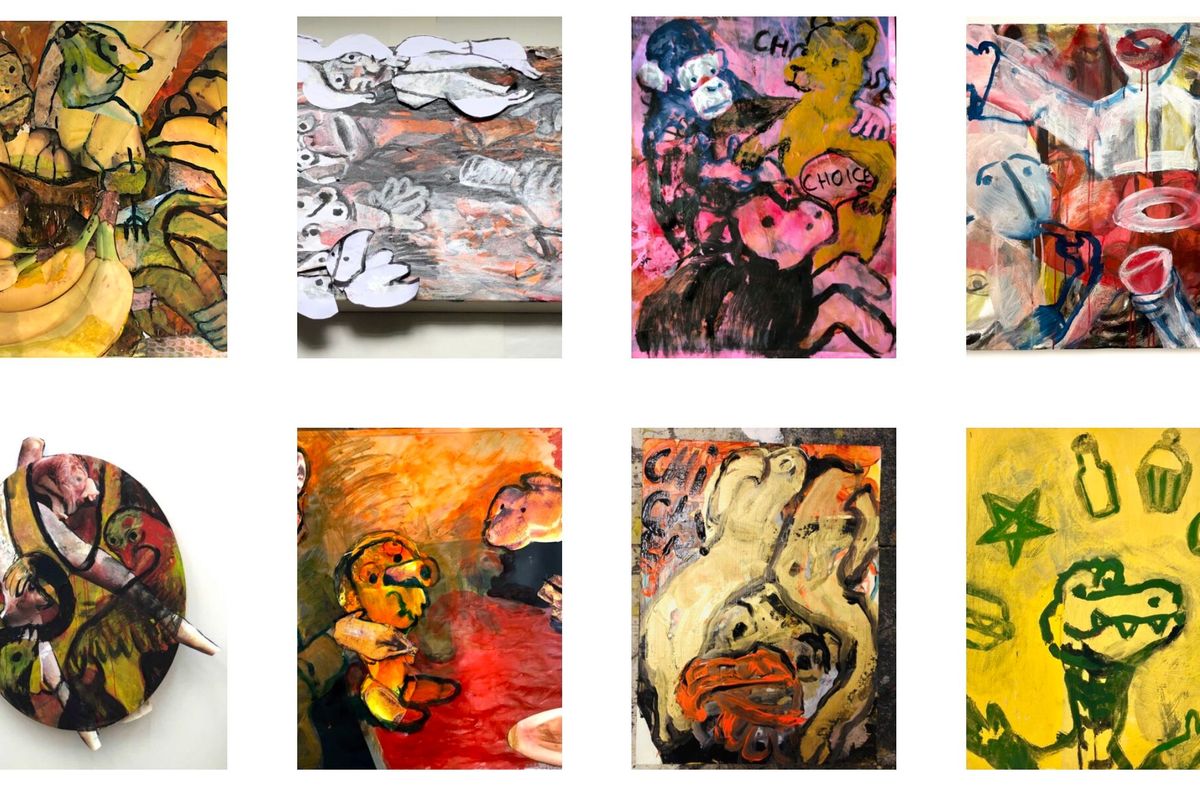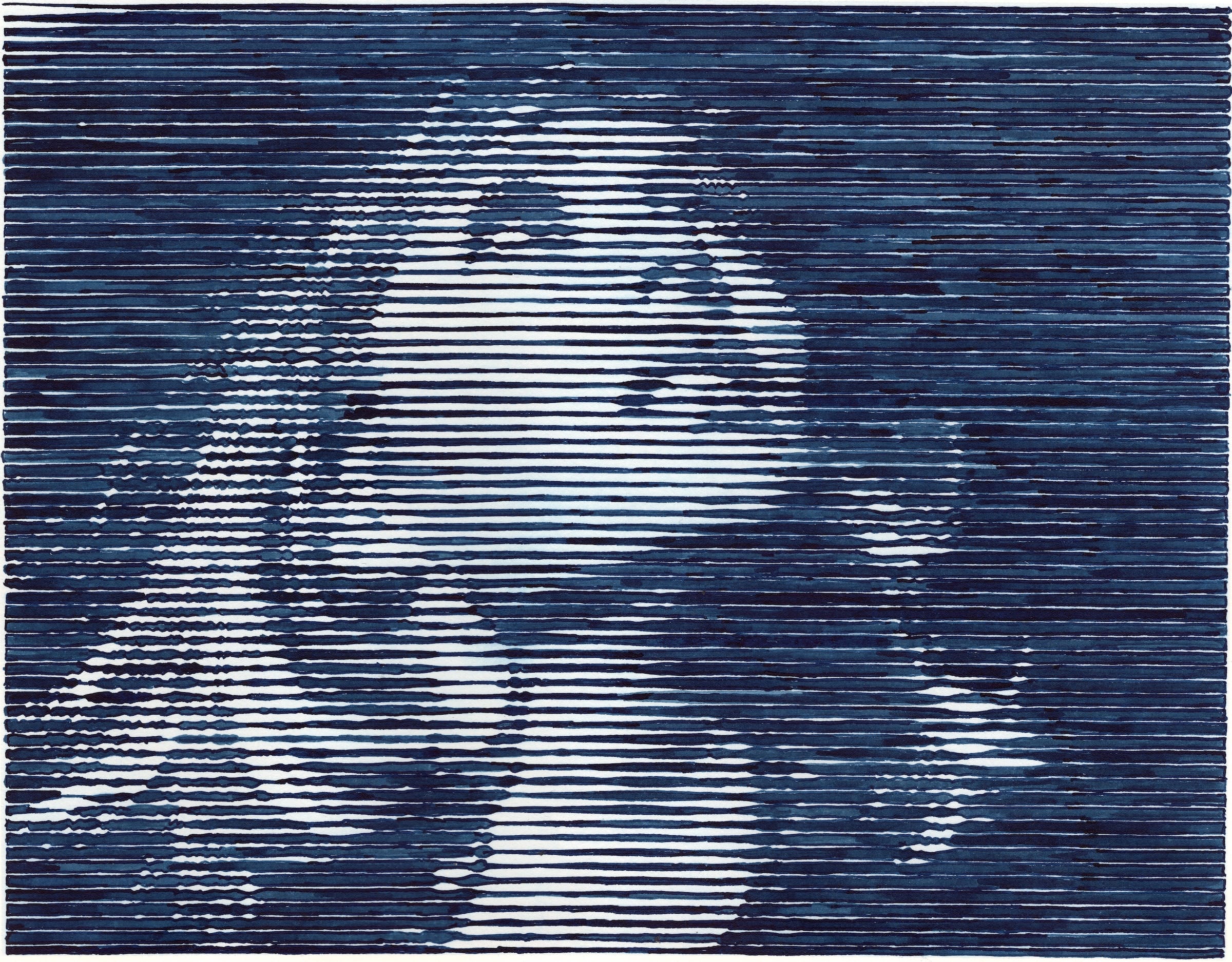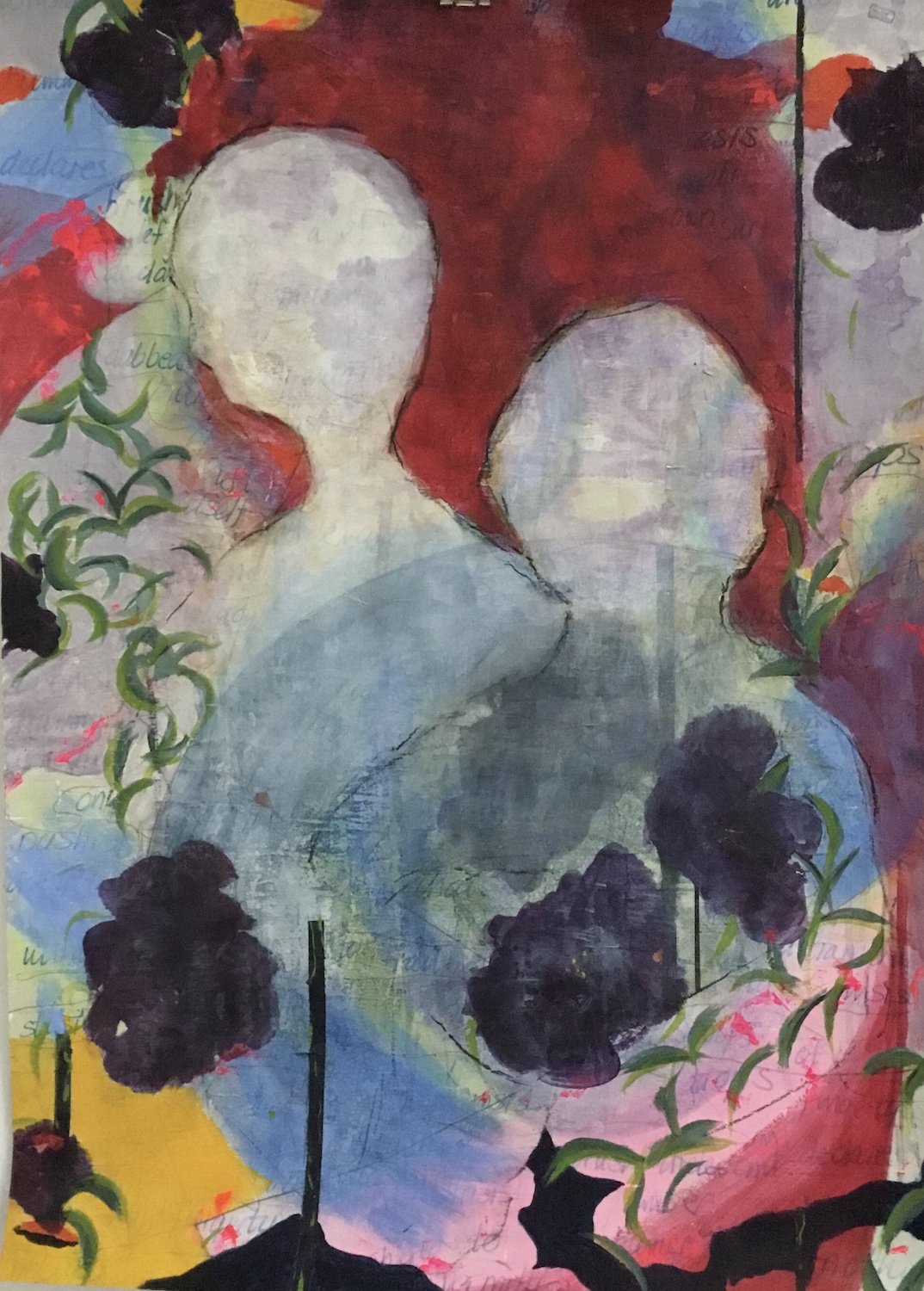Sabrina Shah’s previous exhibitions have drawn our attention to food and relationships, particularly the dinner table as a site charged with emotion and the potential for something, anything, to happen.This setting becomes a space where everything is “on the table”—an enticing yet petrifying prospect for many artists on the verge of laying themselves bare.
It’s perhaps for this reason that I’m not that surprised to see so many chickens in Shah’s workshop. Not real chickens, of course—that would be chaos. But chicken sculptures, chicken drawings, and even a broken chicken that Shah has been attempting to piece back together after it smashed in transit. Its cartoonish eyes eerily gaze up at me, its little chicken head caved into its pot body, awaiting its fate.

“I like chicken,” she tells me. “I like the word chicken, I like the way it sounds.” I reflect on this as I leave, swirling the word in my mouth; the snap of the tongue against the roof of the mouth, the closing of the jaw on the “ch,” and the pull back of the lips on the “ken,” almost like taking a bite. Even for a veggie, I admit the word is quite delicious to sound out.
But it’s more than just the sound that attracts Shah. Chicken, as a word and a concept, brims with topical and propositional possibilities. “I think I’m poking fun at the fear factor,” she muses. “You’re a chicken/you’re not a chicken!” This internal dialogue, I gather, is one Shah is all too familiar with when daring herself to take the next step with a piece. Will you be the chicken served up on the table of doom? Or will you be brave?

This playful yet poignant engagement transforms “Chicken” into a vehicle for deeper reflection, inviting viewers to consider the self-destructive mind games we play with ourselves and each other. Through this lens, “Chicken” becomes a symbol of the wider human experience, highlighting our fears about not being good enough, the complexities surrounding personal and social identity, and our innate ability to manipulate.

Unlike any chicken I’ve ever met, Shah is a solitary creature. Announced if not by her quiet demeanour but the fact she’s chosen a storage unit as her studio. She prefers spaces away from the main road and the bustling environment of shared studios, where her work can be “safe” and uninterrupted by other humans. I suddenly feel very privileged to be in Shah’s personal space.
I’m openly intrigued by the contrast between the artist—polite, kind, and attentive to details, kindly offering me water, Coca-Cola, and fruit, on several occasions, to make sure I feel at ease—and her art, which is fierce, unapologetic, and sensorially demanding. Initially, it’s challenging to connect the two. Where Shah is softly spoken and mindful of her words, her work is loud and provocative.

Something that does strike me as a similarity is Shah’s non-linear thought-processing, a verbal accompaniment to the layered nature of her work. I can almost hear the cogs turning as she contemplates her response, connecting seemingly unrelated concepts before they dip back beneath her waves of consciousness, perhaps to resurface later. Her work, in tow, does not unfold in a clear sequential manner or unravel in straight lines. It weaves a complex narrative.

Shah’s work is inherently inconclusive; I think it’s fair to say that Shah does not draw conclusions. While her pieces are rich with hidden meaning and intricate in structure, they resist systematic composition. Through cutting, sticking, smudging, layering, and repeatedly deconstructing her work, Shah pulls in elements from various time periods, historical references, and phraseology. The result is art that communicates energetically—visually, emotionally, and intellectually—yet deliberately withholds answers, leaving the truth elusive and unsettling.

Indeed, Shah’s work is filled with contradictions, creating ambivalent and enigmatic storylines. In Bullseye, the word is imposed over a cheerful bull figure, subtly questioning power dynamics and (dis)honesty: Who holds the power? Who is the victim?
In Half Full, a frenzied feast takes place—Shah flipped the canvas over several times during its creation, a process consuming more than a few years—producing a topsy-turvy landscape where up and down, left and right resist meaning. Beneath its playful surface lies an unnerving darkness: gushing blood-red tones, violent shards of light, and glimpses of infamous cartoon characters like Tom and Jerry buried beneath layers of paint. Their half-obscured fight points a haunting finger at hidden conflict and unresolved hurt. Shah’s work powerfully embodies how joy can quickly twist into terror, how consumption can spiral into excess, and how the line between light and shadow is often blurred.

I’m intrigued by Shah’s way of describing her creative process in terms of problem-solving; aesthetic elements or the placement of new figures “offering a way out” or “a way in,” depending on your perspective.
Further to this conundrum is her blend of stylistic and thematic tensions. Her artworks balance surface tension—with ripples of paint, impasto smudges, and collaged pieces like paper, fabric, and photographs—against thematic tensions that leave you questioning whether something is good or bad, happy or sad, excited or stressed, as inferred in Bullseye, above, and in Half Full, pictured below. Viewers can follow the evolution of each piece, challenged to abandon the need for control or resolution. Instead of approaching her art as a puzzle to be solved, I feel dared to surrender and embrace the uncertainty of it all.

I’m conscious that for many artists, it’s uncomfortable to explain why they’ve done something in their work. I’m careful when asking what, exactly, needs to be solved, or where, exactly, there should be relief. “I don’t really know why I do things sometimes,” Shah quietly announces. We discuss how trying to theoretically deconstruct paintings can explain them away. Maybe this is why Shah sometimes prefers to be among her paintings rather than in society. Justifying your art is tiring, at times unproductive, and easily turns into a therapy session nobody asked for. We both agree—let the art speak for itself. If we rely too heavily on spoken language to understand art, we limit our ability to connect with it on a deeper level and, arguably, to connect with ourselves and others.

“Do you know the Philip Guston quote?” She asks me.
When you’re in the studio painting, there are a lot of people in there with you – your teachers, friends, painters from history, critics… and one by one, if you’re really painting, they walk out.
Painting is one way to really get quiet. To let the deluge of inner thought and confusion out. To set all the voices and opinions you’ve consumed from those around you free.
And, if you’re really painting, you walk out too.
Shah’s paintings draw in all the noise and the chaos; they are not conductive, they absorb, insulate, and digest the external into their own hidden world beyond the exterior of the canvas. With their loudness and luminosity, they boldly stomach all that we’re trying to rid our minds of, allowing us to seek a little peace.
Interestingly, I don’t think it’s the chaos that scares us most. It’s the quiet. So maybe the closing question is: are you brave enough to seek peace? Or are you a chicken?






